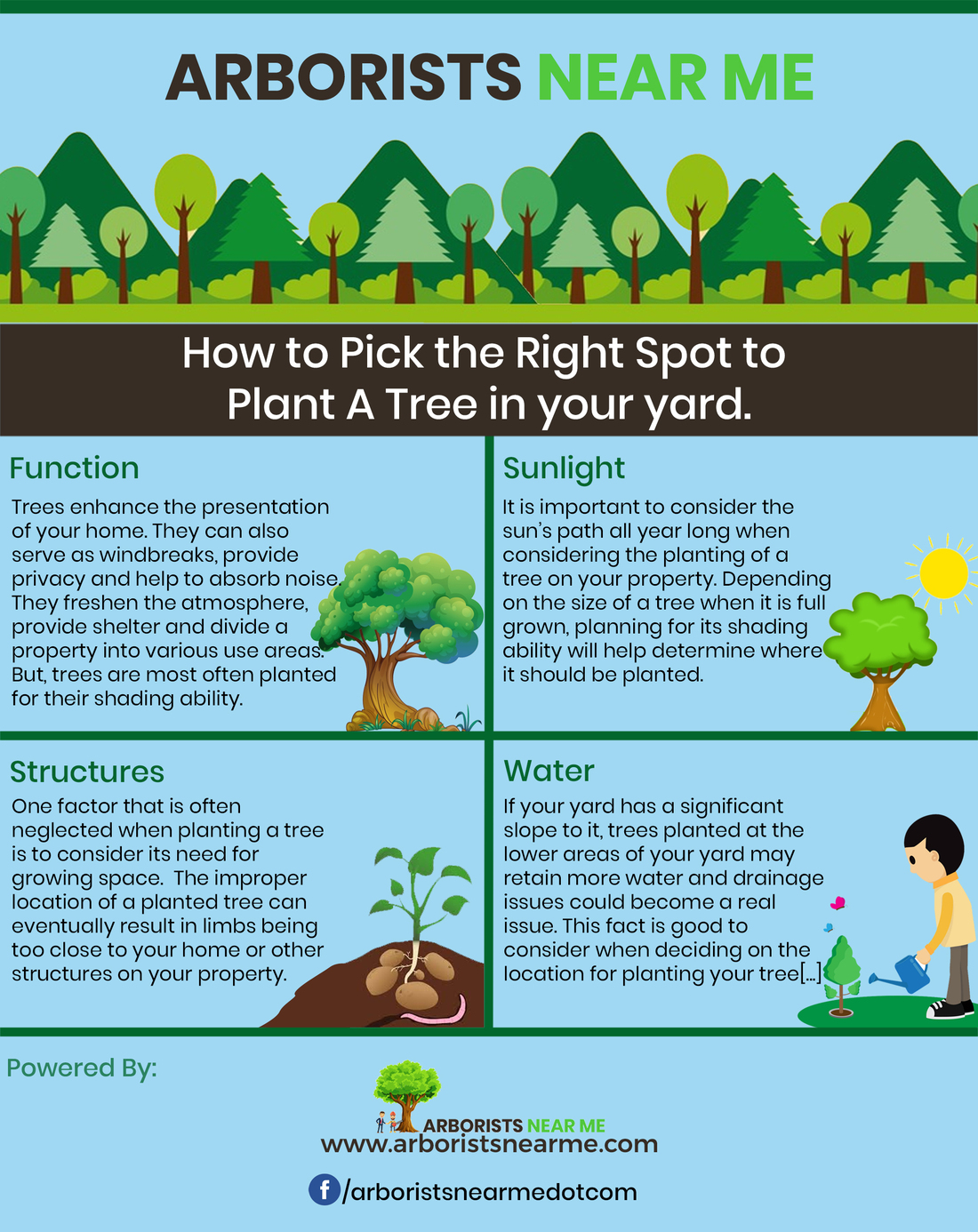
So you want an answer on how to transplant a tree? We can help but first understand whether they’re deciduous or evergreen, colorful or ornamental, trees add tremendous value to homeowners. But, on occasion, a tree’s placement provides a few problems. Perhaps it blocks a new addition when creating a new patio, deck, or building a pool. Maybe the tree is floundering from inadequate mild, soil, or water conditions in its current state of location. A tree may start growing too close to the house or surrounding landscaping, preventing it from growing and developing fully. Whatever the situation, that poorly placed tree doesn’t need to get you down or get chopped down for these reasons. At Arborists near Me we love trees. Our site makes it easy for homeowners to find tree service companies that specialize in transplanting trees. Our tree planting and tree transplanting cost guide talks about the costs of what to expect. You can search our site to call a company directly or fill out the request form above and get up to 3 FREE tree transplanting quotes. We will explain and give you a guide in 9 steps on how to transplant a tree.
MATERIALS AND TOOLS NEEDED TO TRANSPLANT A TREE (Find on Amazon)
WHEN IT'S NOT RECOMMENDED TO TRANSPLANT A TREE
The tree is in a state of strain/deterioration that would warrant a removal
The new vicinity is unsuitable for the specified tree.
The ideal time to transplant a tree or shrub is to some degree dependent on the species, but for most trees and shrubs, late winter or early spring is the best time for transplanting; fall would be the second-best time. In summer, transplanting is not advisable because the weather is simply too hot and the stresses on the plant are too great. And in many climates, the frozen ground makes it virtually impossible to move plants in winter.
HAVE A GAME PLAN PRIOR TO TRANSPLANTING A TREE
The technique of transplanting a tree actually starts often several months prior to the real relocation with the pruning of its roots. This act encourages the increase of recent feeder roots in the direction of the tree’s base to assist the tree higher adapt to its new location. If you’re making plans to transplant a tree within the fall, then prune roots the previous spring. If you’re making plans to transplant a tree in the spring, then prune roots the preceding fall.
STEP 1 -To prepare the tree for pruning, water it properly the day earlier than. Watering enables ensure the soil sticks to the roots, and wet soil is easier to dig into.
STEP 2 - Calculate how plenty of the root ball—the cluster of roots at the base of your tree—you intend to prune. As a well known rule of thumb, the foundation ball should be approximately one foot in diameter for every inch of trunk thickness. So, if the trunk is two inches thick, you’ll purpose to prune the foundation ball to be ft in diameter.
STEP 3 - Cut a trench (about two feet deep and as a minimum one foot wide) across the root ball with a flat spade, ensuring to cut thru the present roots that enlarge past this circumference the usage of the sharp fringe of the spade.
STEP 4 - Refill the trench with the uplifted soil, cautiously placing subsoil underneath topsoil. When you come back in two seasons for the pass, you ought to discover new feeder roots growing closer to the tree trunk and growing a robust root device.
9 STEPS ON HOW TO TRANSPLANT A TREE
After roots are pruned, owners have to supply the tree numerous months to set up a new root machine. Ensure the tree is healthy before putting off it from the ground, on the grounds that a sick or damaged plant likely gained it live on relocation. If the tree isn’t thriving, you could want to maintain off till it becomes wholesome again. Also, as a delivered measure of protection, ensure you aren’t digging near any underground application traces all through the course of the venture.
STEP 1 - Choose a new location cautiously. Make sure the brand new spot has enough area for the tree to develop, in addition to proper soil, light, and water conditions. Every kind of tree has distinct necessities, so make an effort to do your studies.

STEP 2 - Water the tree’s soil sooner or later earlier than transplanting. Moist soil is less difficult to dig and enables hold the cohesiveness of the basis ball.
STEP 3 - In the new location, dig a hole that’s approximately three times as huge yet the identical intensity as the basis ball, with a purpose to deliver the lateral roots room to unfold out. You won’t need to dig a hollow too deep, in any other case rotting of the roots can also occur. Take care to store the soil, isolating the topsoil from the subsoil. Water the hollow well to infuse a few more moisture into the soil, so that it will help keep the basis ball collectively.
STEP 4 - Using a shovel, put off the topsoil close to the trunk and roots of the tree. Then start digging across the tree with a sharp, flat spade approximately six inches in addition than the pruned roots. Digging several inches past the ditch ensures which you include maximum of the brand new feeder roots on the way to help the tree regulate to its new place. If you come across any older, stubborn roots in the route of your digging that you neglected whilst digging the trench months ago, cut them with pruning shears or—in the case of larger roots—loppers.
STEP 5 - After digging all manner across the circumference of the tree, begin to dig beneath the tree to sever the roots beneath. Remember that the diameter of the basis ball as decided whilst pruning need to be left intact; if a tree trunk is two inches in diameter, then dig a touch more than two feet down with the intention to get the entire root ball.
STEP 6 - Once the tree is completely free of the ground, vicinity a sheet of herbal burlap in the hole and coax the tree roots over it. Then raise the tree from the ground with the burlap to prevent breakage. Having some other character available to assist comprise the tree roots in the burlap and raise the tree from the ground will assist immensely.
STEP 7 - Secure the burlap collectively with twine to keep the soil collectively, and bring the tree to its new position. If it’s too heavy to carry, region its burlap-blanketed root ball on a tarp so that you can drag it to the new area.
STEP 8 - Set the tree into the clean hollow, ensuring that the base of the trunk may be stage with the floor once the hole has been absolutely filled. Add any soil necessary to achieve the proper height. Once the tree is placed inside the floor, do away with the burlap and cord.
STEP 9 - Fill the ground across the tree with soil from the dug hollow, making sure to preserve the subsoil on the lowest and the topsoil on pinnacle. Tamp the soil down lightly as you move. Water thoroughly, all the way out to the brink of the hole web site. Then add to 3 inches of mulch around the base of the tree, being cautious not to push it up onto the trunk, to promote adequate moisture ranges and temperature.
HOW TO MAINTAIN A TRANSPLANTED TREE
The care you deliver a tree after transplanting is extraordinarily crucial. If the tree is smaller, planted on flat terrain, and no longer exposed to a variety of wind, you shouldn’t want to stake it. The roots will in reality grow deeper and more potent if you don’t. But keep in mind staking unsteady or large bushes.
After transplanting, ensure the tree gets enough water in relation to the climate, soil type, and rainfall ranges. Generally, homeowners should plan to deeply water the tree each day for the first weeks. Refrain from fertilizing the tree for as a minimum 12 months; you need the tree to concentrate its electricity on rebuilding its root device in preference to generating new boom.
With some planning and considerate care, you’ll be capable of transplanting a tree in its new region for decades to return. Hopefully our article on how to transplant a tree has helped you better understand to plan for this type of tree care project. If you have any doubts or issues we recommend contacting a company that specializes in transplanting trees. Get up to 3 FREE quotes on this type of project from credible Arborist companies.
1. Register your company
2. Create a searchable listing
3. Connect with more clients
